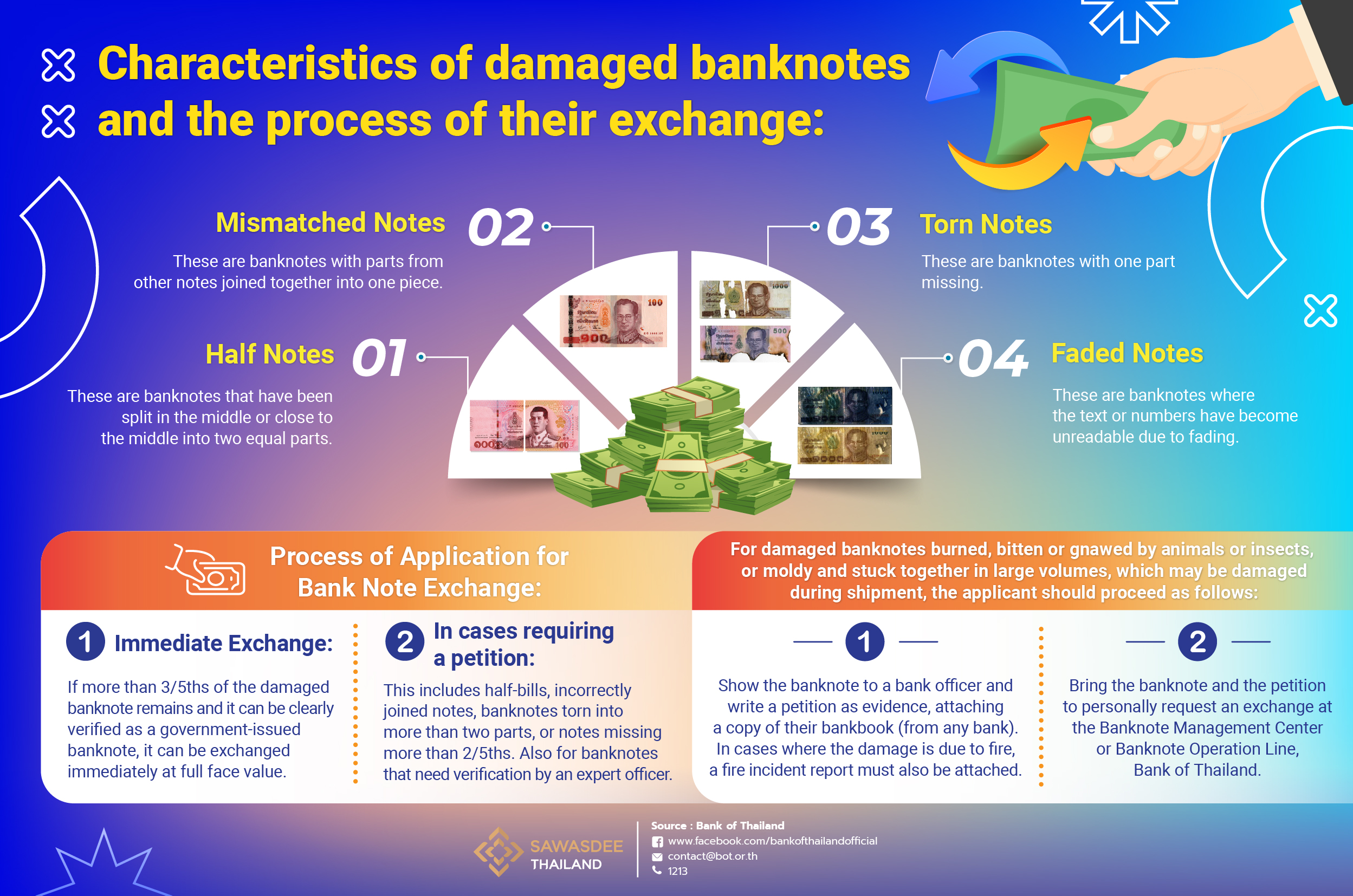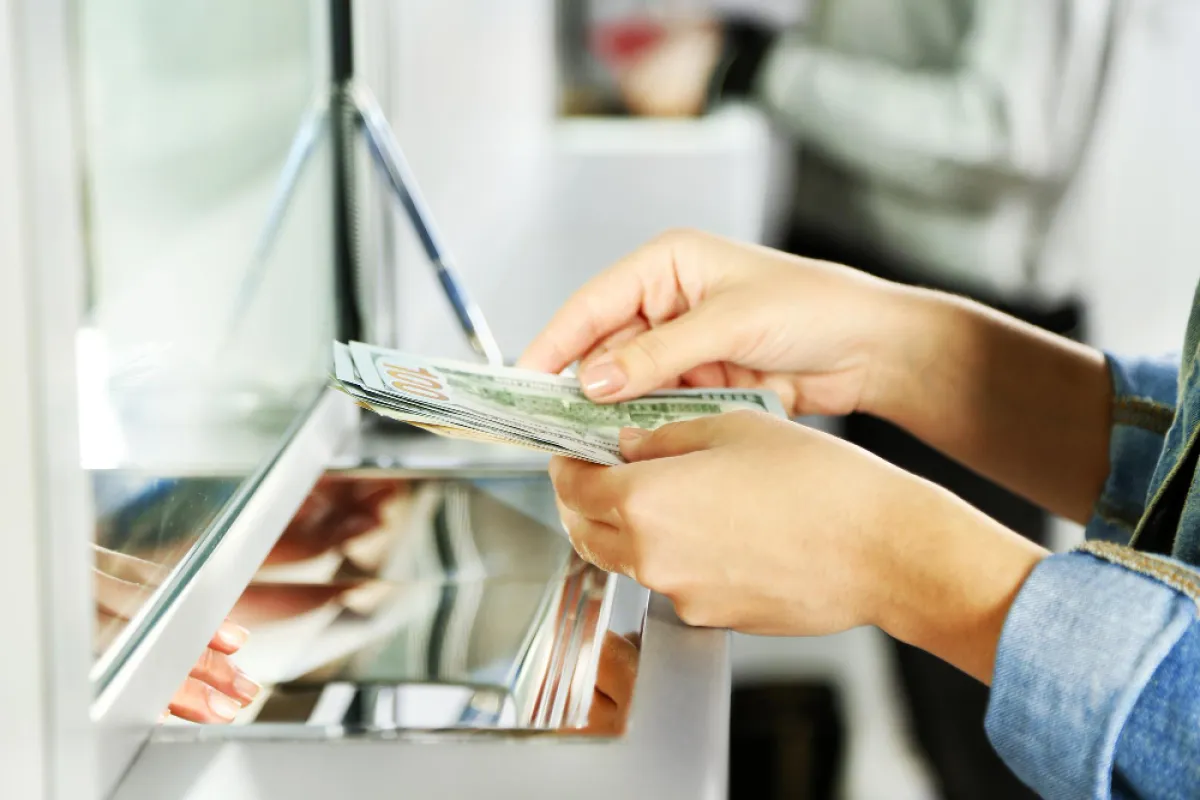Currently used banknotes in Thailand, especially the 20-baht note, have been developed using polymer materials, which make them more resistant to damage. However, most Thai banknotes are still made from 100% cotton, so they often deteriorate, get damaged, or tear after extensive use. Many people wonder how to handle these damaged banknotes.
Let's first understand the characteristics of damaged banknotes and the process of their exchange.
- Half Notes - These are banknotes that have been split in the middle or close to the middle into two equal parts.
Exchange Guidelines - Each half note can be exchanged for half the full value of the note, provided a written request for exchange of the damaged banknote is submitted.
- Mismatched Notes - These are banknotes with parts from other notes joined together into one piece.
Exchange Guidelines - If no more than two parts are joined and each part is of the same type and value, they can be exchanged for the full value of the note. In case the damaged note is split into more than two parts, a written request for exchange of the damaged banknote must be submitted.
- Torn Notes - These are banknotes with one part missing.
Exchange Guidelines - If the remaining part is more than half of the note, and it can clearly be proved to be a government banknote that will not further deteriorate during delivery, it can be exchanged for the full value of the note.
- Faded Notes - These are banknotes where the text or numbers have become unreadable due to fading.
Exchange Guidelines - If the fading does not make it impossible to verify that it is a genuine banknote, it can be exchanged for the full value of the note. In this case, a written request for exchange of the damaged banknote must be submitted so that officials can verify that it is a government banknote.
Process of Application for Bank Note Exchange:
- Immediate Exchange: If more than 3/5ths of the damaged banknote remains and it can be clearly verified as a government-issued banknote, it can be exchanged immediately at full face value.
- In cases requiring a petition:
-
- This includes half-bills, incorrectly joined notes, banknotes torn into more than two parts, or notes missing more than 2/5ths. Also for banknotes that need verification by an expert officer.
- The applicant must write a petition for exchange following a specific format, attaching the damaged banknote and a copy of their bankbook (from any bank). The documents are to be submitted to the bank officer for forwarding to the Bank of Thailand for evaluation.
- The Bank of Thailand will notify the result of consideration and transfer the exchange value to the savings account specified in the petition.
For damaged banknotes burned, bitten or gnawed by animals or insects, or moldy and stuck together in large volumes, which may be damaged during shipment, the applicant should proceed as follows:
- Show the banknote to a bank officer and write a petition as evidence, attaching a copy of their bankbook (from any bank). In cases where the damage is due to fire, a fire incident report must also be attached.
- Bring the banknote and the petition to personally request an exchange at the Banknote Management Center or Banknote Operation Line, Bank of Thailand.
Procedure for Exchanging Damaged Banknotes:
Those wishing to exchange damaged banknotes must bring the damaged banknote, ID card, and bankbook to:
- Government Savings Bank branches nationwide (services are available during business hours every day)
- Commercial banks nationwide (services are available only on Wednesdays, except for branches in department stores and sub-branches)
The criteria are as follows:
- If more than 3/5ths of the banknote remains and it can be easily verified, it can be exchanged immediately.
- If less than 3/5ths of the banknote remains and verification is difficult, a petition form must be filled out for the bank officers to forward the damaged banknote and petition to the Bank of Thailand.
- If the banknote is likely to be damaged during shipment and verification is difficult, a petition must be filled out and a shipping receipt must be obtained from the bank officer, to be brought personally to the Bank of Thailand.
Data updated on June 29, 2023
Source: Bank of Thailand
Tel. 1213


